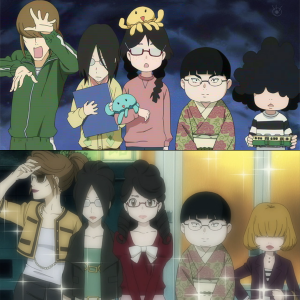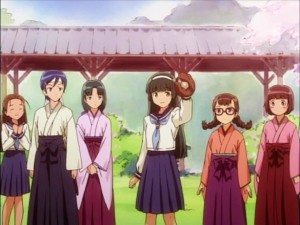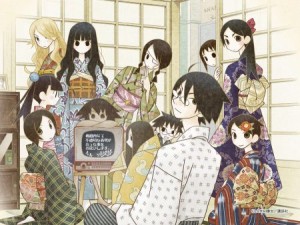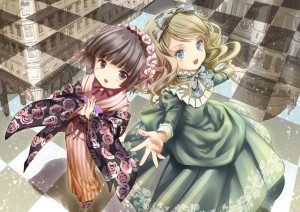Yesterday, I attended the first GeekFest MTL with my friends Dave and Sophie. It was a lot of fun. There were definitely some growing pains that will hopefully be dealt with before next year, but overall it was a worthwhile experience. There were people in all sorts of cosplay, Japanese fashion, LARP outfits, and whatnot, so I figured it would be a great time to bust out a kimono.
I’d actually planned to wear this outfit to a convention last year but I ended up injuring myself and being unable to wear it, so when this opportunity presented itself I decided to get it out of the cabinet. I wore my synthetic mauve komon with one of the amazing vintage obi I got in a bundle last year, and blue and red accessories. I also got to wear the adorable moon and flower obidome Kansai_gal gave me and the amazing kimono cape my grandmother knit. I will be taking better photos of these things during the week, but for now you can see them on me!
The photographer at the convention was kind enough to let me use his drape and lighting setup while he wasn’t using this, so I got my friend Sophie to take this nice studio-style portrait of me! The little guy hanging off my obi is a stuffed octopus with a bandaid on his head. I saw him in the dealer room and had to buy one! My grandmother knit me this amazing cape, to wear with kimono. It’s comfortable, and warm, and I love how it looks. I can’t wait for her to see me wearing it.
[AFG_gallery id=’41’]
This obi was virtually impossible to tie – the tesaki was so short I could barely wrap it around myself twice, let alone save enough to actually tie to the taresaki. I ended up having to remove the hardware from a tsuke-obi, use a bulldog clip and two extra himo, and pray to the gods of kitsuke that it would hold. Thankfully, it not only survived four car trips and five hours at the convention, it also survived dinner and dessert, and a rather inelegant exit out of a two-door Hyundai while I was being sick to my stomach. I was quite proud of myself.
There are many other pictures available in this album on my Facebook account. However, in some of them I am holding a large foam sword that looks alarmingly and realistically like male genitalia, so please be aware of this before clicking.























 Bebe Taian
Bebe Taian CHOKO Blog
CHOKO Blog Gion Kobu
Gion Kobu